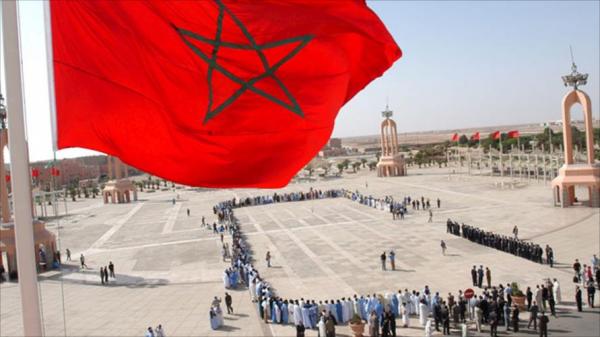
Despite the impact of Covid-19 on the economy of the southern provinces, the indicators for the three regions remain satisfactory. Further efforts will be made to reduce spatial inequalities.
The consolidation of the achievements of the Southern Provinces Development Model is based on a series of indicators that reflect the strong dynamics of these territories. The three poles that make up this region have so far accounted for 97% of the investments made in the framework of the drinking water supply programme for rural populations, without forgetting the actions undertaken in terms of electrification, construction of rural roads and the fight against isolation. At the statistical level, and despite their low contribution to the regional GDP, the two regions Laâyoune-Sakia el Hamra and Dakhla-Oued Eddahab record a growth rate well above the national average, with 10.9% and 10.5% respectively. Similarly, the three southern regions also have a nominal GDP per capita that is higher than the national average. Dakhla comes at the top of the ranking with an average of around 52,301 DH/inhabitant, followed by Laâyoune which records an average of 27,442 DH/inhabitant and Guelmim which has a threshold of 25,136 DH/inhabitant. For the crucial indicator relating to the dynamics of the territories, the data show that the region of Laayoune has experienced, in 2019, the most sustained growth of GDP per capita with an annual rate of 8.4%. The evolution also remains remarkable for the Guelmim region, with a rate of 4%. On the other hand, the high unemployment rate remains one of the problems to be solved for the implementation of the development model. In fact, the southern regions have the highest regional rate, at 16.3%, and together with the Oriental region they are the four regions most affected by the decline in economic activity.
The impact of Covid19 and droughtThe
three regions mentioned above will have to face a particularly difficult year 2020, also characterised by a dry agricultural year. The economy of the southern provinces will therefore be greatly weakened by the fall in national GDP during this year, but also by the crisis currently affecting several sectors. This means that the Development Model for the Saharan provinces will have to be redirected in terms of spending priorities, with a view to creating the necessary margins to finance investment projects whose studies have already been finalised and which will have a proven impact on employment and the productive fabric. The urgent programmes that will be launched in 2021 revolve around the establishment of social security coverage and the operationalisation of the economic recovery and employment pact, as well as assistance to crisis-affected enterprises and vulnerable households. The main concern is to cushion the shock induced by the health crisis and mitigate the economic and social impact on the southern provinces. It should be remembered that in 2019, 12 projects will be implemented as part of the catch-up of deficits in infrastructure and basic services, including 10 in Guelmim-Oued Noun. In 2020, 21 projects have been put on the rails thanks to funding provided by the INDH, at a cost of 15 MDH.
The 2021 objectivesMany
priorities are outlined for the 6th year of the Southern Provinces Development Programme. In order of importance, these are the strengthening of infrastructure and means of transport, the encouragement of private investment and support for economic operators within the 3 regions. The preservation of the intangible heritage and the development of natural resources are also in the line of sight. To date, and out of the 700 projects initially programmed, 158 projects have been completed for a total cost of 11.6 MMDH, while 318 projects are at an advanced stage, with a total allocation exceeding 40 MMDH. The Finance Department’s data also specify that up to March 2020, the total credits committed out of the 85 MMDH, which make up the overall budget of the programme, reached 35.6 MMDH, i.e. a commitment rate of 42%. These investments have made it possible to complete several projects aimed at improving the connectivity of the southern regions with the rest of the regions, not forgetting the strengthening of the energy supply. For 2021, major budgetary efforts will be made, with the implementation of 267 projects spread over the three regions for a budget of 33 MMDH. The list of projects indicates that these include the construction of the Atlantic Port of Dakhla, the desalination and water supply for irrigation of 5,000 hectares to the north of Dakhla, and new wind farms which will cost more than 5.4 MMDH.
A poorly diversified economyThe
economic performance of the three southern regions is driven by the primary sectors and public spending. Indeed, the economy of the Saharan regions is highly dependent on the State, even though the GDP per capita is about 41% higher than the national average. Wages are the main source of income (53% of total income), with the remainder divided between profits (26%), direct and indirect aid (19%) and transfers (1%). The state contributes more than 54% to the GDP of the southern provinces, of which 43% is direct (33% for the state and 10% for public enterprises) and 11% indirect (GDP induced by public investment). Of the total income generated, 80% comes from the various sectors (including the public sector), 16% from direct and indirect aid and the rest from inward transfers. It should also be said that the southern provinces concentrate almost half of the national budget allocated to social aid, which does not manage to diversify the regional economy, which remains vulnerable because it is essentially based on fishing and the processing of sea products, the phosphate sector and, to a lesser extent, the construction and public works sector and market services.

Be the first to comment